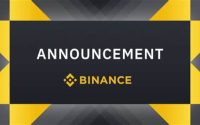DREX: Brazil’s Digital Real Currency
The Central Bank of Brazil has officially unveiled its anticipated central bank digital currency (CBDC) known as DREX, which stands for Digital Real Electronic Xchange. The exciting revelation took place during a broadcast, on the banks YouTube channel, hosted by Fábio Araújo, the coordinator of the real project and Aristides Cavalcante, deputy head of the Central Banks technology and information department.
O Drex, anteriormente conhecido por Real Digital, propiciará ambiente seguro e regulado para a geração de novos negócios, e acesso mais democrático aos benefícios da digitalização da economia a cidadãos e empreendedores.
— Banco Central BR (@BancoCentralBR) August 7, 2023
Brazil’s CBDC Revolution
The name DREX encapsulates its essence by combining elements that represent its Brazils currency) electronic and transactional nature. This innovative CBDC will seamlessly complement Brazils Pix platform, which has revolutionized electronic fund transfers through QR codes and simplified identification methods such as phone numbers.
The visual identity of DREX is equally remarkable. The branding showcases a dynamic ‘D’ with two converging arrows within it symbolizing the currency’s transition from physical to digital. The colour palette transitions from blue to light green to signify the completion of a transaction. Built on distributed ledger technology (DLT) DREX is poised to empower transactions and operations. It will facilitate activities ranging from purchasing and trading public treasury bonds to utilizing web3 infrastructure, for creation and registration.
Bridging Financial Gaps
This groundbreaking CBDC operates within a regulated framework. Authorized entities alone possess the authority to create DREX while ordinary citizens make use of a tokenized edition overseen by authorized institutions. The Central Bank has an objective, minimizing expenses and making essential services accessible, to all. Fábio Araújo, coordinator of the digital real project, expressed his enthusiasm, stating, “We aim to make these financial products accessible to the public and increase financial inclusion in Brazil.”
Related: PayPal Launches PYUSD Stablecoin
Earlier this year, the Central Bank showcased its digital real pilot project on GitHub, inviting public scrutiny of its system code. Developers uncovered certain functions within the smart contract that raised concerns, including the potential to freeze accounts, adjust balances, and create new digital currency units. Amid apprehensions, proponents of these functionalities argue their potential value, particularly in improving tax tracking. By utilizing DREX, the government could enhance transparency in financial transactions, allowing the public greater insight into government spending and legislative amendments.



